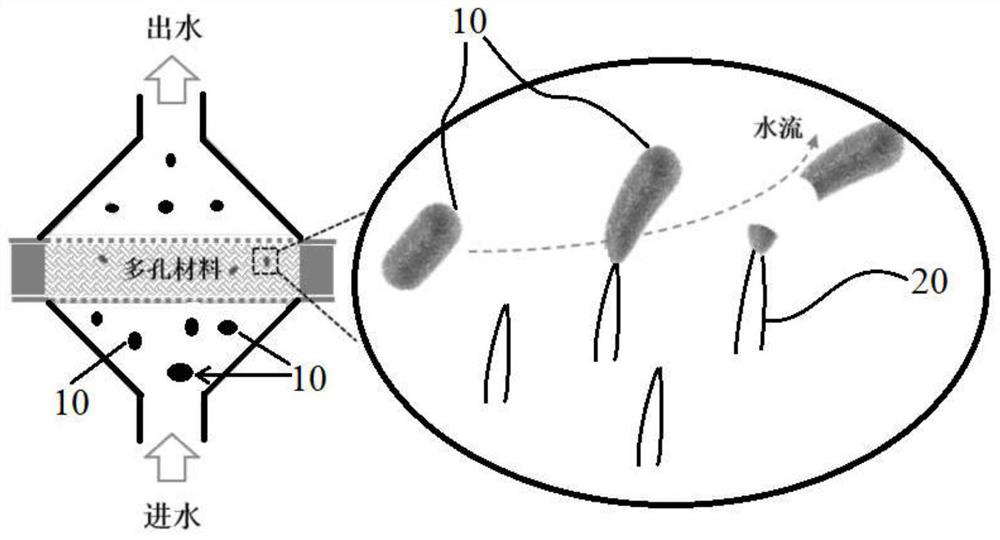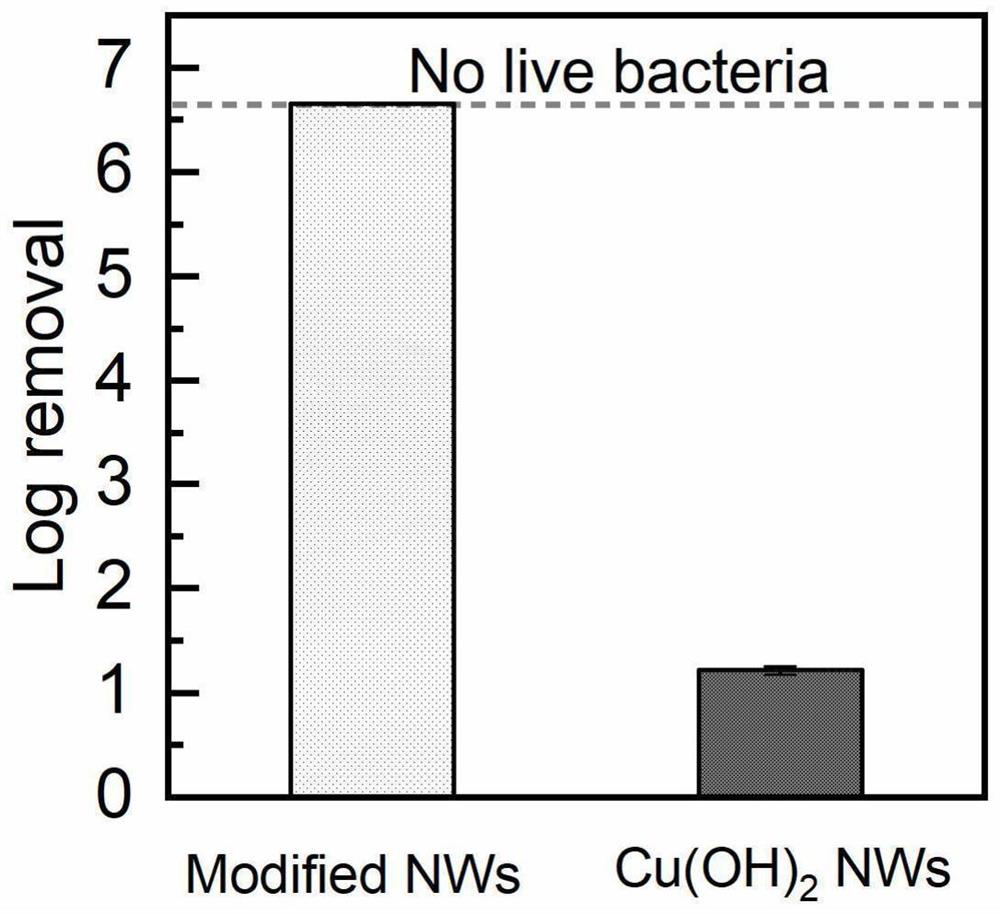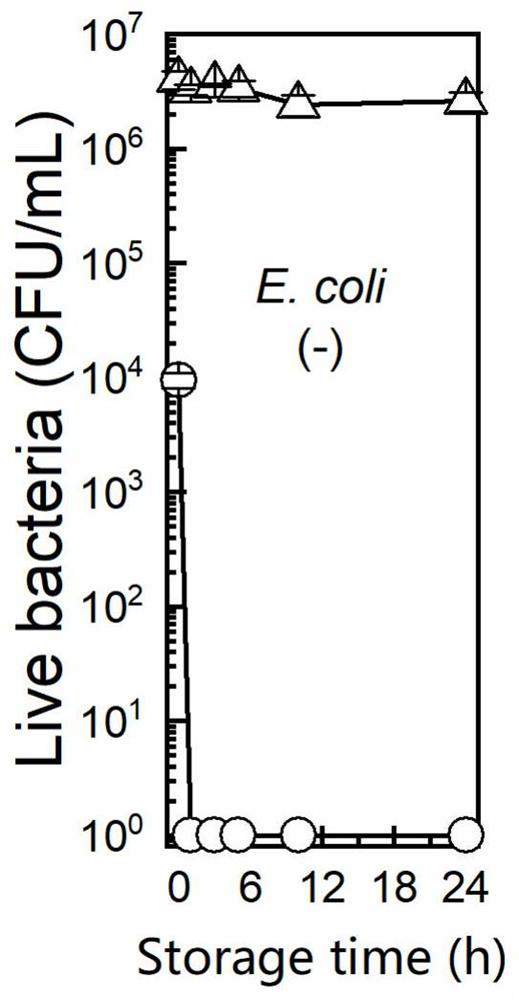Porous material with surface modified nanostructure array and application thereof
A nano-structured, porous material technology, applied in applications, chemicals for biological control, animal repellents, etc., can solve the problems of insignificant bacteriostatic effect and long contact time, and achieve improved bacteriostatic effect and contact The effect of short time and improved inactivation efficiency
- Summary
- Abstract
- Description
- Claims
- Application Information
AI Technical Summary
Problems solved by technology
Method used
Image
Examples
Embodiment 1
[0029] Prepare the surface-modified copper hydroxide nanowire array and place it in a closed pipeline, such as figure 1 shown. will contain 10 6 ~10 7 The water sample of CFU / mL Escherichia coli (CGMCC 1.3373) was introduced into the pipeline through the water pump. Treatment is complete when the water sample flows out through the nanowire array. The concentration of viable bacteria in the water samples to be treated and the treated water samples was determined by plate counting method, and the bacterial inactivation efficiency was evaluated by logarithmic inactivation rate, and the calculation method was -log 10 (N / N 0 ), where N 0 N is the bacterial concentration in the influent, and N is the bacterial concentration in the effluent. The inactivation rate of Escherichia coli by surface-modified copper hydroxide nanowires is as follows: figure 2 As shown in the histogram Modified NWs, the effluent bacteria are completely inactivated, and the inactivation rate can reach...
Embodiment 2
[0033] Surface-modified copper hydroxide nanowire arrays were used to treat four typical bacteria in water bodies, and the treated water samples were stored at 25°C under simulated light conditions, at the time points of 0, 1, 5, 10, and 24 hours of storage Samples were taken to determine the concentration of viable bacteria in the treated water samples by the plate count method. Storage curves such as Figures 3a-3d As shown, after the hydraulic antibacterial treatment of the present invention, Gram-negative Escherichia coli (E.coli, CGMCC 1.3373), Pseudomonas aeruginosa (P.Aeruginosa, CGMCC 1.12483), and Gram The positive Enterococcus faecalis (E.faecalis, CGMCC 1.2135) and Staphylococcus aureus (S.aureus, CGMCC 1.12409) can all be inactivated during storage, and the inactivation rate is above 6log, and there is no resurrection phenomenon.
Embodiment 3
[0035] ZnO nanorod arrays grown in situ on copper foam were prepared, and the same surface modification method was used to treat the ZnO nanorod arrays. Escherichia coli were treated with surface-modified and pristine unmodified ZnO nanorod arrays. Other operation steps are identical with embodiment 1. For the treated effluent, samples were taken at the storage time points of 0, 1, 5, and 10 h to determine the concentration of viable bacteria in the treated water samples by plate counting. The result is as Figure 4 As shown, the surface-modified zinc oxide nanorod array (Modified-ZnO nanorods) can achieve a 4log inactivation rate after treating Escherichia coli, while the original zinc oxide nanorod array has no significant antibacterial effect.
PUM
| Property | Measurement | Unit |
|---|---|---|
| height | aaaaa | aaaaa |
| size | aaaaa | aaaaa |
| thickness | aaaaa | aaaaa |
Abstract
Description
Claims
Application Information
 Login to View More
Login to View More - R&D
- Intellectual Property
- Life Sciences
- Materials
- Tech Scout
- Unparalleled Data Quality
- Higher Quality Content
- 60% Fewer Hallucinations
Browse by: Latest US Patents, China's latest patents, Technical Efficacy Thesaurus, Application Domain, Technology Topic, Popular Technical Reports.
© 2025 PatSnap. All rights reserved.Legal|Privacy policy|Modern Slavery Act Transparency Statement|Sitemap|About US| Contact US: help@patsnap.com



